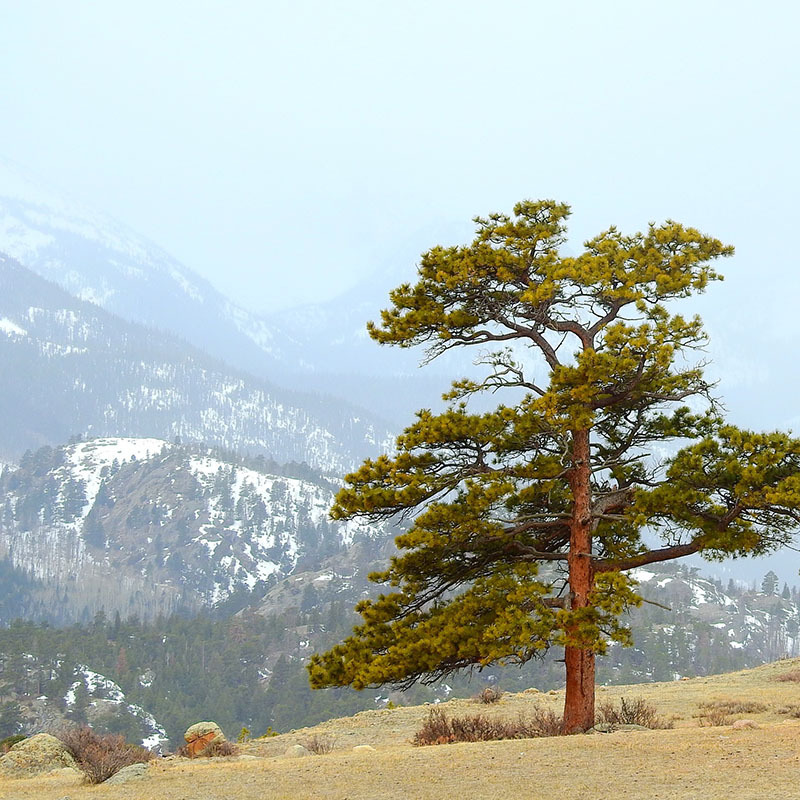Southern Rocky Mountain Ponderosa Pine Savanna
Staunton State Park, Jefferson County
Ponderosa Pine Savanna
There are 3.2 million acres of Ponderosa pine (Pinus ponderosa) forests in Colorado. This ecosystem is found foothills and lower montane elevations, often in arid, exposed locations, and is most common in western Colorado and along the eastern sections of the Front Range. Ponderosa pines can live to be 500 years old and have deep taproots that allow them to survive in arid, windy areas. The savanna systems in which Pinus ponderosa live have less than 25% canopy cover. The dominant ponderosa pine sub-species in Colorado is var. scopulorum.
In a completely natural state ponderosa pine savannas are fire-adapted ecosystems. The species has the ability to survive low-intensity wildfires because of its insulating bark. Even when the tree trunks are only two inches in diameter the bark will insulate the tree’s cambium layer against fire. In this natural state, fires occurred in intervals of less than 40 years and cleared out very small trees and understory vegetation resulting in open savannas with canopy coverage of about 25%.
When the US Forest Service and other agencies began managing these forests 100 years ago, they suppressed these fires and the forests became thicker with greater understory vegetation. This forest management, combined with climate change produced fires that burned after longer periods but with more intensity. Ponderosa pines are not adapted to intense fires because once its crown is burned, the tree dies and does not sprout from the stump, or have serotinous cones, or seeds that live a long time in the seed bank in the soil.
Some Commonly Associated Plants
Click on photo to see full-page lightbox image.
In lightbox, click on X in upper right corner to return here.
In species which are adapted to intense fires, such as lodgepole pine, the cones are serotinous and require a short period of intense heat to release the seeds. These seeds are released after the fire and sprout in the newly enriched, bare soil. One can see the effectiveness of this characteristic by visiting Yellowstone National Park which had a massive fire in 1988. The lodgepole pine forests there have regenerated in thick stands.
In full sun parts of these savannas, it is common to find sun loving cool and warm season grasses like Western Wheatgrass (Pascopyrum smithii) and Blue Grama (Bouteloua gracilis), sedge species such as Geyer’s Sedge (Carex geyeri) and sun sedge (Carex inops ssp. heliophila) as well as sun loving shrubs including Sagebrush species like mountain sagebrush (Artemisia tridentata ssp. vaseyana) and Mountain Mahogany (Cercocarpus montanus), among others. The understory of the tree canopy includes shrubs that have a bit more shade tolerance. These include, but are not limited to, rose species such as antelope bitterbrush (Purshia tridentata) chokecherry (Prunus virginiana), and Serviceberry (Amelanchier alnifolia).
– Mo Ewing

